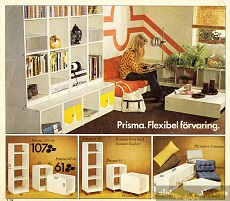
The digital age has changed marketing in many ways for businesses – with the introduction of a new digital platform that your audience can engage with. But what does that mean for the future of traditional methods, such as catalogues? Letterbox distribution specialist DLM reveals catalogues actually still have a place with many businesses and consumers.
What are businesses’ attitudes towards catalogues?
It seems that businesses haven’t let the rise of digital marketing get in the way of using catalogues as a marketing method. In a survey conducted by Catalogues4Business of over 100 UK businesses, it was discovered that catalogues were still considered important.
In fact, 70% of business respondents had had a business catalogue for over five years, and 54% had their catalogues for over 10 years. 27% also said the product was essential to their business.
In addition to this, 38% of companies surveyed stated that the use of catalogues ‘will be more important in the coming year’; 17% said that it will be ‘crucial’. This is because they believe that catalogues help to build their brand awareness and their reputation too.
What do customers think of catalogues?
Despite younger generations growing up in the digital era, a survey reported by Forbes in 2013 reported that 95% of customers stated that they prefer printed catalogues over online versions. According to Forbes, printed material gives users something tactile to touch, and flicking through a catalogue is a very tangible process.
It was revealed that customers respond to catalogues as part of their strategy, with catalogues having the power to drive sales: 59% of their sales had been directly attributed to a catalogue, and they have driven a 29% uplift in web sales, according to the Catalogues4Business survey.
The option to buy a product over credit is one of the main reasons businesses offer catalogues as part of their sales and marketing. This allows customers to get what they need and pay in instalments – as well as helping the business make sales. Fashion brands such as Simply Be and Boden, and multi-faceted department stores including Matalan and John Lewis are just a few brands which offer credit to their customers.
The rise of digital catalogues
Businesses also adopt the traditional methods alongside the new technologies available to them by producing digital catalogues for their customers. They offer a new way for consumers to place orders, as people can browse through them using a variety of media and place their order online – something that couldn’t be done 20 years ago.
Catalogue marketing
The traditional method is still popular amongst businesses though. Namely direct marketing by sending catalogues to potential customers is still a popular choice for marketing amongst retailers.
It also seems to be popular on a business to business level. In these cases, businesses can syndicate their range of products directly to their buyers.
To make sure businesses are up to date with the latest methods, a combination of printed catalogues and digital catalogues is the best approach. Design your products for your customers first, consulting with specialist designers to make sure products are showcased in the best way.
Finished catalogues can be distributed in a number of ways: through the post in direct mail form, integrated into your website, emailed as a version to suppliers and given to sales people for something physical to go into meetings with.






